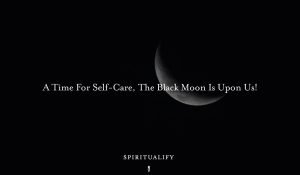There are different types of meditation that you can experiment with to increase your inner search and improve your health. In this article, we see seven, experiment with them all and then choose the one/s that most attract you most.
But before you get to know the 7 types of meditation, we want to tell you one important thing: meditation is really only one.
There are several categories, the ones we present here, but know that whatever you do with awareness and attention is meditation.
Here are the 7 types of meditation: what is ideal for you?
1. Transcendental Meditation (TM):
Maharishi, the main supporter of transcendental meditation, states that the purpose of transcendental meditation is the state of enlightenment. It is possible to experience that inner calm, that state of calm of minimum excitement even when we are dynamically engaged.
An expert guide is recommended to effectively learn transcendental meditation. There is a lot of information on the internet including meditation retreats.
2. The Meditation of Cardiac Rhythm:
Meditation of cardiac rhythm concentrates energy on the development of the application of consciousness.
This form of meditation focuses primarily on the heart, with an emphasis on breathing and the purpose is to experience the mantra of the mystics, “I am a part of all things and all things are a part of me.”
This meditation is one of the simplest types of meditation to help people manage stress better and develop a grateful and joyful spirit.
Recommended: Powerful Meditation to Restore Your Galactic DNA Code.
3. Kundalini Meditation:
Unlike the previous one, Kundalini meditation is a form of upward meditation that focuses on the increasing flow of energy.
This form of meditation, like many types of meditation, has roots in both Buddhist and Hindu teachings, and in Sanskrit translates to “spiral”.
To access this energy you need to focus on your breath as it flows through the energy centers in the body. Once the energy is perceived, the individual can experience an altered state of consciousness.
It is one of the most difficult types of meditation to carry out, we strongly advise against doing it alone and relying on an experienced guide.
4. Meditation in guided or free viewing:
Guided or free viewing is a newer technique that can be used for spiritual healing, stress management or personal development. Among the factors that distinguish this practice from other types of meditation is certainly the focus on objectives.
By imagining relaxing and positive experiences, the body responds by releasing chemicals that generate feelings of positivity and activating what science defines as selective attention, ie your brain will show you people, situations, things in line with what you have imagined.
5. Qi Gong:
Among the various types of meditation, QiGong also improves posture, breathing and the ability to relax. Qi Gong is one of the oldest forms of meditation and comes from ancient Chinese society.
This practice of health and wellness uses the breath to circulate one’s vital energy through the energy centers of the body. The targeted combination of breathing, movement, and meditation techniques helps you control your reactions to stress.
Recommended: Simple Meditation Technique to Harvest the Energy of the Universe.
6. Sitting Meditation:
Zazen is the heart of Zen Buddhist practice and literally translates into “sitting meditation”.
Among the types of meditation, this method is initially the easiest to undertake because it is based on the breath. The mental benefits of sitting meditation are many because you acquire the ability to let go of all thoughts and images of judgment.
7. Mindfulness:
The last of the type of meditation that we want to recommend to you is the Mindfulness that can be translated with the word awareness. This meditation comes from the Buddhist tradition and is the one we were talking about at the beginning of the article.
To evoke mindfulness in everything you do is essential to overcome suffering and to understand the natural wisdom of things. It is a matter of recognizing reality by letting the mind wander, accepting any thought that is present and understanding the present.
The practice is done while sitting with the eyes closed, the legs crossed, the back straight and the attention placed on the breath.
Among the types of meditation, it is probably the easiest because all you have to do is concentrate on the breath.
A mindfulness regime can reduce anxiety and depression. Studies to support meditation are today more than 1200 (in the 80s they were only a few dozen).
Recommended Book for You:
Meditation For Complete Beginners
A Guide to Becoming a Happier, Healthier, and More Peaceful You.
Conclusion:
You will not like all the types of meditation we have described to you. Experiment and see which one helps you the most to reach that level of inner peace you are looking for.
See all the insights we’ve advised you and once you’ve found your method, incorporate it into your daily schedule to better address the stressful situations you may encounter during the day.
We wish you much Joy.











